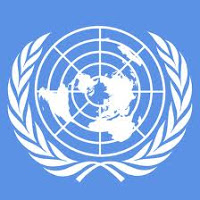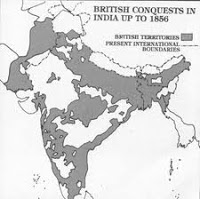The Mother and Child Tracking System (MCTS) is designed to collate information of all pregnant women and infants so as to ensure delivery of maternal and child health services from conception till 42 days after delivery in the case of pregnant women and up to five years of age in the case of children so as to ensure that all pregnant women and all new born receive full maternal and immunization services. MCTS was started by the Ministry of Health and Family Welfare last year as an e-governance initiative. The total number of pregnant women registered has crossed the one crore mark on 28 October, 2011. The number of children registered in the system is also expected to cross 50 lakh by the end of this month. The project is being implemented in the Mission Mode and a dedicated unit has been established in the Ministry of Health and Family Welfare for coordinating and collaborating with States/Union Territories for the implementation of the project. The information generated through the system is also being used for planning maternal and child health services at the grass roots level by the female health worker in association with village level volunteers like ASHA and Aanganwadi Worker.
Current Affairs India November 2011 | Indian Current Affairs Short Notes
31 Oct 2011
By
Admin
Related Posts with thumbnails for bloggerblogger widgets
Continue reading..
Jawaharlal Nehru as Prime Minister of India
26 Oct 2011
By
Admin
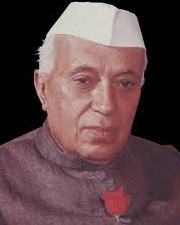 Jawaharlal Nehru was the first and longest-serving Prime Minister of India (1947–1964). Nehru contributed to the establishment of a secular Parliamentary democracy in India and was one of the founders of the international Non-Aligned Movement. Nehru advocated Fabian Socialism (Socialism through gradualism, not through revolution) and a strong Public sector as the means by which economic development could be pursued by poorer nations. He created the Planning commission of India and started the Five-Year Plans in 1951. Nehru envisaged a mixed economy in which the government would manage strategic industries such as mining, electricity and heavy industries, serving public interest and a check to private enterprise. Nehru pursued land redistribution and launched programmes to build irrigation canals, dams and spread the use of fertilizers to increase agricultural production. Nehru envisioned the developing of nuclear weapons and established the Atomic Energy Commission of India (AEC) in 1948. Homi J. Bhabha was entrusted with complete authority over all nuclear related affairs and programs and answered only to Nehru himself.
Jawaharlal Nehru was the first and longest-serving Prime Minister of India (1947–1964). Nehru contributed to the establishment of a secular Parliamentary democracy in India and was one of the founders of the international Non-Aligned Movement. Nehru advocated Fabian Socialism (Socialism through gradualism, not through revolution) and a strong Public sector as the means by which economic development could be pursued by poorer nations. He created the Planning commission of India and started the Five-Year Plans in 1951. Nehru envisaged a mixed economy in which the government would manage strategic industries such as mining, electricity and heavy industries, serving public interest and a check to private enterprise. Nehru pursued land redistribution and launched programmes to build irrigation canals, dams and spread the use of fertilizers to increase agricultural production. Nehru envisioned the developing of nuclear weapons and established the Atomic Energy Commission of India (AEC) in 1948. Homi J. Bhabha was entrusted with complete authority over all nuclear related affairs and programs and answered only to Nehru himself.
Related Posts with thumbnails for bloggerblogger widgets
Continue reading..
Jawaharlal Nehru as Freedom Fighter | Indian Freedom Fighters
By
Admin
 Pandit Jawaharlal Nehru (1889 - 1964) was one of the prominent leaders of Indian freedom struggle. He was the favourite disciple of Gandhiji and later became the first Prime Minister of India. Nehru is widely recognized as the architect of modern India. He had spent almost 14 years of his life in prison during India’s freedom struggle. After his studies in England, Jawaharlal Nehru returned to India in 1912 as a barrister. He married Kamala Nehru in 1916. In 1917, he joined Home Rule League. His became active in politics after meeting Mahatma Gandhi in 1919. At that time Gandhi had launched a campaign against Rowlatt Act. Nehru was instantly attracted to Gandhi's commitment for active but peaceful, non-co-operation movement (1920-1922). He actively participated in the movement and was arrested twice in connection with the Non-Cooperation Movement of 1920-22.
He organised the first Kisan March in Pratapgarh District of Uttar Pradesh in 1920.
Pandit Jawaharlal Nehru (1889 - 1964) was one of the prominent leaders of Indian freedom struggle. He was the favourite disciple of Gandhiji and later became the first Prime Minister of India. Nehru is widely recognized as the architect of modern India. He had spent almost 14 years of his life in prison during India’s freedom struggle. After his studies in England, Jawaharlal Nehru returned to India in 1912 as a barrister. He married Kamala Nehru in 1916. In 1917, he joined Home Rule League. His became active in politics after meeting Mahatma Gandhi in 1919. At that time Gandhi had launched a campaign against Rowlatt Act. Nehru was instantly attracted to Gandhi's commitment for active but peaceful, non-co-operation movement (1920-1922). He actively participated in the movement and was arrested twice in connection with the Non-Cooperation Movement of 1920-22.
He organised the first Kisan March in Pratapgarh District of Uttar Pradesh in 1920.
Related Posts with thumbnails for bloggerblogger widgets
Continue reading..
UNFCCC and Kyoto Protocol Explained
24 Oct 2011
By
Admin
 The United Nations Framework Convention on Climate Change (UNFCCC or FCCC) is an international environmental treaty came into effect at the UN Conference on Environment and Development (UNCED). The convention is informally known as the Earth Summit and was held in Rio de Janeiro in 1992. The aim of the treaty is to stabilize greenhouse gas concentrations in the atmosphere at a level that would prevent dangerous anthropogenic interference with the climate system. The treaty itself set no mandatory limits on greenhouse gas emissions for individual countries and contains no enforcement mechanisms. So the treaty is considered as legally non-binding. But the treaty provides for updates (called "protocols") that would set mandatory emission limits. The first and principal update is the Kyoto Protocol. The Protocol was initially adopted in 1997 in Kyoto, Japan, and entered into force in 2005. As of September 2011, 191 states have signed and ratified the protocol. A notable exception is United States, which had signed, but not ready to ratify it.
The United Nations Framework Convention on Climate Change (UNFCCC or FCCC) is an international environmental treaty came into effect at the UN Conference on Environment and Development (UNCED). The convention is informally known as the Earth Summit and was held in Rio de Janeiro in 1992. The aim of the treaty is to stabilize greenhouse gas concentrations in the atmosphere at a level that would prevent dangerous anthropogenic interference with the climate system. The treaty itself set no mandatory limits on greenhouse gas emissions for individual countries and contains no enforcement mechanisms. So the treaty is considered as legally non-binding. But the treaty provides for updates (called "protocols") that would set mandatory emission limits. The first and principal update is the Kyoto Protocol. The Protocol was initially adopted in 1997 in Kyoto, Japan, and entered into force in 2005. As of September 2011, 191 states have signed and ratified the protocol. A notable exception is United States, which had signed, but not ready to ratify it.
Related Posts with thumbnails for bloggerblogger widgets
Continue reading..
Current Affairs India October 2011 | Indian Current Affairs Short Notes
23 Oct 2011
By
Admin
A comprehensive Social Security Agreement (SSA) was signed between India and Germany in Berlin. This is the 60th year of diplomatic relationship between India and Germany. There are about 68,500 Indians in Germany most of whom are working as professionals and self-employed. Both India and Germany reaffirmed that the bilateral trade should reach US$ 20 billion by 2012. There is a huge potential for Indian for Indian workers to take employment in Germany. India has signed similar agreements with Belgium, France, Switzerland, The Netherlands, Luxembourg, Hungary, Denmark, Czech Republic, the Republic of Korea and Norway.
Related Posts with thumbnails for bloggerblogger widgets
Continue reading..
Faster, Sustainable and More Inclusive Growth | India's Twelfth Year Plan
22 Oct 2011
By
Admin
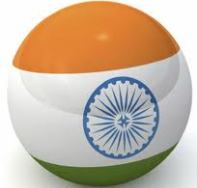 In the last decade, the Indian economy moved to a higher growth path. Between 2005 and 2008, the economy grew at around 9.5 per cent per annum. This made India one of the fastest growing nations in the world. The global financial crisis brought the growth down to 6.8 per cent in 2008-09, though even then India remained a growth leader in the world. This was followed by a strong recovery and the Indian economy grew by 8 and 8.5 per cent in the subsequent two years. Data for the first quarter of 2011-12 indicate a growth rate of 7.7 per cent. While there may be some moderation in growth in the current fiscal, the fundamentals of the economy are intact and the medium-term growth prospects remain buoyant. But the renewed uncertainty in the global economy, due to sluggish US growth and worsening of the Euro-zone sovereign debt crisis and weak business sentiments and persisting high inflation at home, poses considerable challenges to our economic growth.
In the last decade, the Indian economy moved to a higher growth path. Between 2005 and 2008, the economy grew at around 9.5 per cent per annum. This made India one of the fastest growing nations in the world. The global financial crisis brought the growth down to 6.8 per cent in 2008-09, though even then India remained a growth leader in the world. This was followed by a strong recovery and the Indian economy grew by 8 and 8.5 per cent in the subsequent two years. Data for the first quarter of 2011-12 indicate a growth rate of 7.7 per cent. While there may be some moderation in growth in the current fiscal, the fundamentals of the economy are intact and the medium-term growth prospects remain buoyant. But the renewed uncertainty in the global economy, due to sluggish US growth and worsening of the Euro-zone sovereign debt crisis and weak business sentiments and persisting high inflation at home, poses considerable challenges to our economic growth.
Related Posts with thumbnails for bloggerblogger widgets
Continue reading..
Indian Independence Struggle | Revolutionary movement
By
Admin
The Revolutionary movement for Indian independence is often a less-highlighted aspect of the Indian independence movement. These revolutionary groups believed in armed revolt against the British. They were the true heroes of Indian Independence struggle and most of them threw away life’s for their motherland. Apart from a few incidents, the revolutionary struggle against the British rulers was not organized before the beginning of the 20th century. The revolutionary philosophies and movement made its presence much stronger during the 1905 Partition of Bengal. Below mentioned are the major revolutionary groups aimed for the independence of India through armed rebellion.
Related Posts with thumbnails for bloggerblogger widgets
Continue reading..
Urban Heat Island | Causes and Effects of Urban Heat Island
By
Admin
 An urban heat island (UHI) is a urban area which is significantly warmer than its surrounding rural areas. The temperature difference usually is larger at night than during the day, and is most apparent when winds are weak. Seasonally, UHI is seen during both summer and winter. By virtue of their high heat capacities, urban surfaces act as a giant reservoir of heat energy. For example, concrete can hold roughly 2,000 times as much heat as an equivalent volume of air. Latest studies shows that UHI is one among the main reasons for Global warming. The rising columns of warm air in urban areas are commonly called as "urban thermal plume". The temperature difference between urban areas and the surrounding rural areas can be as much as 5 degrees Celsius
An urban heat island (UHI) is a urban area which is significantly warmer than its surrounding rural areas. The temperature difference usually is larger at night than during the day, and is most apparent when winds are weak. Seasonally, UHI is seen during both summer and winter. By virtue of their high heat capacities, urban surfaces act as a giant reservoir of heat energy. For example, concrete can hold roughly 2,000 times as much heat as an equivalent volume of air. Latest studies shows that UHI is one among the main reasons for Global warming. The rising columns of warm air in urban areas are commonly called as "urban thermal plume". The temperature difference between urban areas and the surrounding rural areas can be as much as 5 degrees Celsius
Related Posts with thumbnails for bloggerblogger widgets
Continue reading..
Vinayak Damodar Savarkar | Indian Freedom Fighters
21 Oct 2011
By
Admin
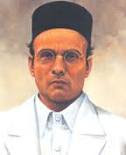 Vinayak Damodar Savarkar (1883–1966) was an Indian freedom fighter, revolutionary and politician. Savarkar created the term Hindutva, and emphasized its distinctiveness from Hinduism. Savarkar's revolutionary activities began when studying in India and England, where he was associated with the India House and founded student societies including Abhinav Bharat Society and the Free India Society, as well as publications supporting the cause of complete Indian independence by revolutionary means. Savarkar published The History of the War of Indian Independence about the Indian rebellion of 1857 that was banned by British authorities. He was arrested in 1910 for his connections with the revolutionary group India House. Following a failed attempt to escape while being transported from Marseilles, Savarkar was sentenced to two life terms amounting to 50 years' imprisonment and moved to the Cellular Jail in the Andaman and Nicobar Islands.
Vinayak Damodar Savarkar (1883–1966) was an Indian freedom fighter, revolutionary and politician. Savarkar created the term Hindutva, and emphasized its distinctiveness from Hinduism. Savarkar's revolutionary activities began when studying in India and England, where he was associated with the India House and founded student societies including Abhinav Bharat Society and the Free India Society, as well as publications supporting the cause of complete Indian independence by revolutionary means. Savarkar published The History of the War of Indian Independence about the Indian rebellion of 1857 that was banned by British authorities. He was arrested in 1910 for his connections with the revolutionary group India House. Following a failed attempt to escape while being transported from Marseilles, Savarkar was sentenced to two life terms amounting to 50 years' imprisonment and moved to the Cellular Jail in the Andaman and Nicobar Islands.
Related Posts with thumbnails for bloggerblogger widgets
Continue reading..
Aurobindo Ghosh | Indian Freedom Fighters
By
Admin
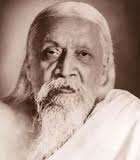 Aurobindo Ghosh (1872–1950) was an Indian nationalist, freedom fighter. He later turned into a world famous philosopher, yogi and guru. After education in England, he passed the famous ICS exam and joined the Baroda state service. When Bengal was partitioned, a nationalist campaign was carried out by groups of revolutionaries, led by Aurobindo Ghosh. He was one among the leads who established Jugantar, a main secret revolutionary group operated in Bengal. He was also the part of another revolutionary group, Anushilan Samiti. To take the extremists' view to the public, Bipin Chandra Pal had founded the nationalist Bengali newspaper Bande Mataram. Pal invited Aurobindo to become its editor along with Pal. Pal after a few issues discontinued contributing to the paper. The paper rapidly became a major success and the radical views finally found a popular voice. But as a result of its popularity and open espousal of aggressive methods, the paper came into frequent confrontation with the Raj.
Aurobindo Ghosh (1872–1950) was an Indian nationalist, freedom fighter. He later turned into a world famous philosopher, yogi and guru. After education in England, he passed the famous ICS exam and joined the Baroda state service. When Bengal was partitioned, a nationalist campaign was carried out by groups of revolutionaries, led by Aurobindo Ghosh. He was one among the leads who established Jugantar, a main secret revolutionary group operated in Bengal. He was also the part of another revolutionary group, Anushilan Samiti. To take the extremists' view to the public, Bipin Chandra Pal had founded the nationalist Bengali newspaper Bande Mataram. Pal invited Aurobindo to become its editor along with Pal. Pal after a few issues discontinued contributing to the paper. The paper rapidly became a major success and the radical views finally found a popular voice. But as a result of its popularity and open espousal of aggressive methods, the paper came into frequent confrontation with the Raj.
Related Posts with thumbnails for bloggerblogger widgets
Continue reading..
Bipin Chandra Pal | Indian Freedom Fighters
20 Oct 2011
By
Admin
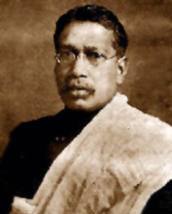 Bipin Chandra Pal (1858-1932) is known as the 'Father Of Revolutionary Thoughts' in India and was one of the freedom fighters of India. He was famous as one of the trio militant patriots of the Congress - the "Pal" of Lal Bal Pal. The trio was responsible for initiating the first popular upsurge against British colonial policy in the 1905 partition of Bengal, before the advent of Gandhi into Indian politics. Pal was also the founder and cheif editor of the journal Bande Mataram. In 1907, Pal was imprisoned for refusing to give evidence against Aurovinda Ghosh in the Bande Mataram Sedition Case. After release, he left for England, where he was briefly associated with the radical India House and founded the Swaraj journal. However, political repercussions in the wake of Curson Wyllie's assassination in 1909 by Madanlal Dhingra lead to the collapse of this publication, driving Pal to penury and mental collapse in London.
Bipin Chandra Pal (1858-1932) is known as the 'Father Of Revolutionary Thoughts' in India and was one of the freedom fighters of India. He was famous as one of the trio militant patriots of the Congress - the "Pal" of Lal Bal Pal. The trio was responsible for initiating the first popular upsurge against British colonial policy in the 1905 partition of Bengal, before the advent of Gandhi into Indian politics. Pal was also the founder and cheif editor of the journal Bande Mataram. In 1907, Pal was imprisoned for refusing to give evidence against Aurovinda Ghosh in the Bande Mataram Sedition Case. After release, he left for England, where he was briefly associated with the radical India House and founded the Swaraj journal. However, political repercussions in the wake of Curson Wyllie's assassination in 1909 by Madanlal Dhingra lead to the collapse of this publication, driving Pal to penury and mental collapse in London.
Related Posts with thumbnails for bloggerblogger widgets
Continue reading..
Bal Gangadhar Tilak | Indian Freedom Fighters
19 Oct 2011
By
Admin
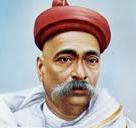 Bal Gangadhar Tilak (1856-1920, Maharashtra), was a social reformer and freedom fighter who was the first popular leader of the Indian Independence Movement. His famous quote, "Swaraj is my birthright, and I shall have it", created waves all across the country during the initial period of national wide freedom struggle movement. The British derogatorily called him as "Father of the Indian unrest". He was also conferred with the honorary title of Lokmanya, which literally means "Accepted by the people". He was one of the first and strongest advocates of "Swaraj" (self-rule). Tilak was considered the political and spiritual leader of Gandhi. When Tilak died in 1920, Gandhi paid his respects at his cremation in Bombay, along with 200,000 people. Gandhi called Tilak "The Maker of Modern India". Tilak is also today considered the father of Hindu Nationalism. He was the idol of Indian revolutionary Vinayak Damodar Savarkar, who penned the political doctrine of Hindutva.
Bal Gangadhar Tilak (1856-1920, Maharashtra), was a social reformer and freedom fighter who was the first popular leader of the Indian Independence Movement. His famous quote, "Swaraj is my birthright, and I shall have it", created waves all across the country during the initial period of national wide freedom struggle movement. The British derogatorily called him as "Father of the Indian unrest". He was also conferred with the honorary title of Lokmanya, which literally means "Accepted by the people". He was one of the first and strongest advocates of "Swaraj" (self-rule). Tilak was considered the political and spiritual leader of Gandhi. When Tilak died in 1920, Gandhi paid his respects at his cremation in Bombay, along with 200,000 people. Gandhi called Tilak "The Maker of Modern India". Tilak is also today considered the father of Hindu Nationalism. He was the idol of Indian revolutionary Vinayak Damodar Savarkar, who penned the political doctrine of Hindutva.
Related Posts with thumbnails for bloggerblogger widgets
Continue reading..
Lala Lajpat Rai | Indian Freedom Fighters
18 Oct 2011
By
Admin
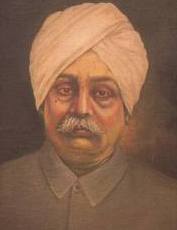 Lala Lajpat Rai (1865–1928) was an Indian author and freedom fighter. He was popularly known as Punjab Kesari (The Lion of Punjab). His death anniversary (November 17) is celebrated as martyr's day in India. He founded the National College, inside the Bradlaugh Hall in Lahore to impart quality education to the Indians, who did not want to join British institutions. Bhagat Singh was a graduate from the National College.
He was one of the three most prominent Hindu Nationalist members of the Indian National Congress.The other two members of the trio were Bal Gangadhar Tilak and Bipin Chandra Pal. They were known as Lal-Bal-Pal trio. They formed the extremist faction of the Indian National Congress, as opposed to the moderate one led first by Gopal Krishna Gokhale. Lalaji actively participated in the struggle against partition of Bengal. Along with Surendra Nath Banerjee, Bipin Chandra Pal and Aurorbindo Ghosh, he lead the Swadeshi movement which started in 1905. Lajpat Rai was arrested in 1907 for creating "turmoil" in Rawalpindi. He was put in Mandalay jail for six months.
Lala Lajpat Rai (1865–1928) was an Indian author and freedom fighter. He was popularly known as Punjab Kesari (The Lion of Punjab). His death anniversary (November 17) is celebrated as martyr's day in India. He founded the National College, inside the Bradlaugh Hall in Lahore to impart quality education to the Indians, who did not want to join British institutions. Bhagat Singh was a graduate from the National College.
He was one of the three most prominent Hindu Nationalist members of the Indian National Congress.The other two members of the trio were Bal Gangadhar Tilak and Bipin Chandra Pal. They were known as Lal-Bal-Pal trio. They formed the extremist faction of the Indian National Congress, as opposed to the moderate one led first by Gopal Krishna Gokhale. Lalaji actively participated in the struggle against partition of Bengal. Along with Surendra Nath Banerjee, Bipin Chandra Pal and Aurorbindo Ghosh, he lead the Swadeshi movement which started in 1905. Lajpat Rai was arrested in 1907 for creating "turmoil" in Rawalpindi. He was put in Mandalay jail for six months.
Related Posts with thumbnails for bloggerblogger widgets
Continue reading..
Sir Syed Ahmed Khan | Aligarh Movement
16 Oct 2011
By
Admin
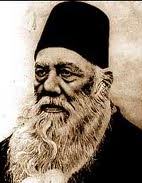 After the War of Independence 1857, British believed that the Muslims were responsible for the anti-British uprising; therefore they made them the subject of ruthless punishments and revenge. In order to convince the that Muslims alone wre not responsible for the war of 1857, Hindus and other nations in India also participated in the war Aligarh movement was started. The movement was lead by Sir Syed Ahmed Khan. In order to clear the doubts from the minds of the British about Muslims Sir Syed Ahmed Khan wrote a pamphlet "The Causes Of Indian Revolt". Its most significant achievement was the establishment of Muhammadan Anglo-Oriental College at Aligarh, which later became Aligarh Muslim University. Also it lead the opening of minds of Muslims towards Western literature, science and technology.
After the War of Independence 1857, British believed that the Muslims were responsible for the anti-British uprising; therefore they made them the subject of ruthless punishments and revenge. In order to convince the that Muslims alone wre not responsible for the war of 1857, Hindus and other nations in India also participated in the war Aligarh movement was started. The movement was lead by Sir Syed Ahmed Khan. In order to clear the doubts from the minds of the British about Muslims Sir Syed Ahmed Khan wrote a pamphlet "The Causes Of Indian Revolt". Its most significant achievement was the establishment of Muhammadan Anglo-Oriental College at Aligarh, which later became Aligarh Muslim University. Also it lead the opening of minds of Muslims towards Western literature, science and technology.
Related Posts with thumbnails for bloggerblogger widgets
Continue reading..
Swami Vivekananda
By
Admin
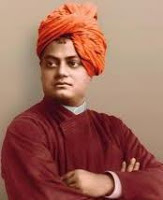 The original name of Swami Vivekananda (1863 – 1902) was Narendranath Dutta. Hewas the chief disciple of the Ramakrishna Paramahansa and the founder of the Ramakrishna Math and the Ramakrishna Mission. He introduced of Hindu philosophies of Vedanta and Yoga to the "Western" World, mainly in America and Europe and is also credited in bringing Hinduism to the status of a major world religion during the end of the 19th century. He is considered to be a major force in the revival of Hinduism in modern India. He is best known for his inspiring speech beginning with "Sisters and Brothers of America",through which he introduced Hinduism at the Parliament of the World's Religions at Chicago in 1893.
The original name of Swami Vivekananda (1863 – 1902) was Narendranath Dutta. Hewas the chief disciple of the Ramakrishna Paramahansa and the founder of the Ramakrishna Math and the Ramakrishna Mission. He introduced of Hindu philosophies of Vedanta and Yoga to the "Western" World, mainly in America and Europe and is also credited in bringing Hinduism to the status of a major world religion during the end of the 19th century. He is considered to be a major force in the revival of Hinduism in modern India. He is best known for his inspiring speech beginning with "Sisters and Brothers of America",through which he introduced Hinduism at the Parliament of the World's Religions at Chicago in 1893.
Related Posts with thumbnails for bloggerblogger widgets
Continue reading..
Annie Basant | The Theosophical Society of India | Indian Home Rule Movement
By
Admin
 The Theosophical Society was formed in New York, in 1875 by Helena Blavatsky and Henry Steel Olcott. In 1882, Olcott and Blavatsky moved to India and established the International Headquarters at Adyar, in Madras. Following were included in the Society's agenda.
The Theosophical Society was formed in New York, in 1875 by Helena Blavatsky and Henry Steel Olcott. In 1882, Olcott and Blavatsky moved to India and established the International Headquarters at Adyar, in Madras. Following were included in the Society's agenda.
1. To form a nucleus of the universal brotherhood of humanity without distinction of race, creed, sex, caste, or colour.
2. To encourage the study of comparative religion, philosophy, and science.
3. To investigate the unexplained laws of nature and the powers latent in man.
In 1893, Annie Basant joined Theosophical Society of India. The soceity became more prominent when Annie Basant became the President of the Theosophical Society in 1907. As part of her Theosophy-related work, she helped Madan Mohan Malayia to establish the Central Hindu College, which later developed into Banaras Hindu University. She joined the Indian National Congress later. When World War I broke out in 1914 she helped launch the Home Rule League to campaign for democracy in India and dominion status within the Empire. This lead to her election as president of the India National Congress in 1917. After the war she continued to campaign for Indian independence and for the causes of Theosophy until her death in 1933.
Related Posts with thumbnails for bloggerblogger widgets
Continue reading..
Jyotiba Phule and Savitribai Phule
By
Admin
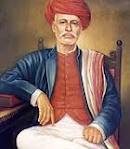 Mahatma Jotiba Govindrao Phule (1827 — 1890) was an activist and social reformer from Maharashtra. Jotiba Phule and his wife Savitribai Phule were the pioneer of women's education in India. His remarkable influence was apparent in fields like education, agriculture, caste system, women and widow upliftment and removal of untouchability. He is most known for his efforts to educate women and the lower castes as well as the masses. He, after educating his wife, opened a school for girls in India in August 1848. This was the second girls school in India.
Mahatma Jotiba Govindrao Phule (1827 — 1890) was an activist and social reformer from Maharashtra. Jotiba Phule and his wife Savitribai Phule were the pioneer of women's education in India. His remarkable influence was apparent in fields like education, agriculture, caste system, women and widow upliftment and removal of untouchability. He is most known for his efforts to educate women and the lower castes as well as the masses. He, after educating his wife, opened a school for girls in India in August 1848. This was the second girls school in India.
Related Posts with thumbnails for bloggerblogger widgets
Continue reading..
Current Affairs India October 2011 | Indian Current Affairs Short Notes
15 Oct 2011
By
Admin
The proposed National Policy of Electronics, 2011 envisions creating a globally competitive Electronics Systems and Design Manufacturing (ESDM) industry including nano-electronics to meet the country`s needs and serve the international market. The draft policy sets out to achieve a turnover of about USD 400 Billion by 2020 involving investment of about USD 100 Billion. It also aims at ensuring employment to around 28 million in the sector by 2020. The policy also proposes setting up of over 200 electronic manufacturing clusters. Another important objective of the policy is to significantly upscale high-end human resource creation to 2500 PhDs annually by 2020 in the sector.
Related Posts with thumbnails for bloggerblogger widgets
Continue reading..
Latest Health News October 2011 | Health News from India
By
Admin
Encephalitis is an acute infection and inflammation of the brain. Encephalitis is generally a viral illness. Viruses such as those responsible for causing cold sores, mumps, measles, and chickenpox can also cause encephalitis. A certain family of viruses, the Arboviruses are spread by insects such as mosquitoes.Japanese encephalitis virus is the most common arbovirus in the world (virus transmitted by blood-sucking mosquitoes or ticks) and is responsible for 50,000 cases and 15,000 deaths per year. In UP,the majority of patients are suffering from water-borne entero-virus encephalitis while the cases of Japanese Encephalitis are about 10 per cent of the total encephalitis patients. A similar type of disease is meningitis where inflammation happens to the layers covering the brain.
Related Posts with thumbnails for bloggerblogger widgets
Continue reading..
Associations in British India
14 Oct 2011
By
Admin
Landholders’ Society - 1831
The Zamindari Association, which was later renamed Landholders’ Society, was established in 1831 by Dwarkanath Tagore and other major landlords of Bengal. It has been described as “the first organisation of Bengal with distinct political object.” The society virtually became defunct after the death of Dwarkanath Tagore.
British India Society - 1839
The British India Society was set up in 1839 in England primarily as a result of the efforts of William Adam, who was a counterpart of Ram Mohan Roy. In 1841, it started publishing a newspaper named British Indian Advocate, edited by William Adam.
Related Posts with thumbnails for bloggerblogger widgets
Continue reading..
Ishwar Chandra Vidyasagar
By
Admin
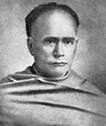 Ishwar Chandra Vidyasagar (1820 - 1891) was a prominent figure of the Bengal Renaissance. Vidyasagar was a philosopher, academic, writer, printer, publisher, entrepreneur, reformer, and philanthropist. He received the title "Vidyasagar" ("Ocean of knowledge") from the Calcutta Sanskrit College, where he graduated, due to his excellent performance in Sanskrit studies and philosophy. Ishwar Chandra was a brilliant student and in 1841, at the age of twenty one years, he joined the Fort William College as a head of the Sanskrit department. Vidyasagar vigorously promoted the idea that regardless of their caste, both men and women should receive the best education.
Ishwar Chandra Vidyasagar (1820 - 1891) was a prominent figure of the Bengal Renaissance. Vidyasagar was a philosopher, academic, writer, printer, publisher, entrepreneur, reformer, and philanthropist. He received the title "Vidyasagar" ("Ocean of knowledge") from the Calcutta Sanskrit College, where he graduated, due to his excellent performance in Sanskrit studies and philosophy. Ishwar Chandra was a brilliant student and in 1841, at the age of twenty one years, he joined the Fort William College as a head of the Sanskrit department. Vidyasagar vigorously promoted the idea that regardless of their caste, both men and women should receive the best education.
Related Posts with thumbnails for bloggerblogger widgets
Continue reading..
Ilbert Bill of 1883 | Ilbert Bill Controversy
13 Oct 2011
By
Admin
The Ilbert Bill was a bill introduced in 1883 by Viceroy Ripon that proposed an amendment for existing laws in India. The bill allow Indian judges and magistrates the jurisdiction to try British offenders in criminal cases at the District level, something that was disallowed at the time. The bill wa proposed by Sir Courtenay Ilbert who was the legal adviser to the Viceroy of India's Council. The introduction of the bill led to intense opposition in Britain and from British settlers in India that ultimately played on racial tensions. Finally in 1884, the bill was amended as Criminal Procedure Code Amendment Act in which jurisdiction to try Europeans would be conferred on European only. The bitter controversy deepened antagonism between the British and Indians and was a prelude to the formation of the Indian National Congress the following year.
Related Posts with thumbnails for bloggerblogger widgets
Continue reading..
Prarthana Samaj | Atmaram Pandurang
12 Oct 2011
By
Admin
Prarthana Samaj or "Prayer Society" was a movement for religious and social reform in Maharashtra, established in 1867. It was an off-shoot of Brahmo Samaj. Sir Ramakrishna Gopal Bhandarkar, Dr. Atmaram Pandurang, Narayan Chandavarkar and Justice Mahadev Govinda Ranade were the people behind it. It critically examined the relations between contemporary social and cultural systems and religious beliefs and gave priority to social reforms. Their comprehensive reform movement has led many impressive projects of cultural change and social reform in Western India, such as the improvement of the lot of women and depressed classes, an end to the caste system, abolition of child marriages and infanticide, educational opportunites for women, and remarriage of widows.
Related Posts with thumbnails for bloggerblogger widgets
Continue reading..
Current Affairs India October 2011 | Indian Current Affairs Short Notes
By
Admin
Bill & Melinda Gates Foundation -funded US dollars 338 million project, called Avahan, which was launched in six Indian states of Tamil Nadu, Karnataka, Andhra Pradesh, Maharashtra, Manipur and Nagaland in 2003. It was launched for the purpose of reducing the spread of HIV in India and developing a model prevention system to encourage others worldwide to adapt and adopt it. With the help of this project, more than 100,000 fresh HIV cases have been averted over the last five years among the general population in India which has some 2.4 million people living with the virus.
Related Posts with thumbnails for bloggerblogger widgets
Continue reading..
Kaziranga National Park of India
By
Admin
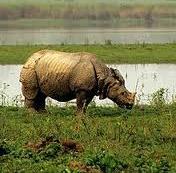 Kaziranga National Park is a national park in the state of Assam, India. A World Heritage Site, the park hosts two-thirds of the world's Great One-horned Rhinoceroses. Kaziranga boasts the highest density of tigers among protected areas in the world and was declared a Tiger Reserve in 2006. The park is home to large breeding populations of elephants, wild water buffalo, and swamp deer. Kaziranga is recognized as an Important Bird Area by Birdlife International for conservation of avifaunal species. Kaziranga is a vast expanse of tall elephant grass, marshland, and dense tropical moist broadleaf forests, crisscrossed by four major rivers, including the Brahmaputra, and the park includes numerous small bodies of water. The park celebrated its centennial in 2005 after its establishment in 1905 as a reserve forest.
Kaziranga National Park is a national park in the state of Assam, India. A World Heritage Site, the park hosts two-thirds of the world's Great One-horned Rhinoceroses. Kaziranga boasts the highest density of tigers among protected areas in the world and was declared a Tiger Reserve in 2006. The park is home to large breeding populations of elephants, wild water buffalo, and swamp deer. Kaziranga is recognized as an Important Bird Area by Birdlife International for conservation of avifaunal species. Kaziranga is a vast expanse of tall elephant grass, marshland, and dense tropical moist broadleaf forests, crisscrossed by four major rivers, including the Brahmaputra, and the park includes numerous small bodies of water. The park celebrated its centennial in 2005 after its establishment in 1905 as a reserve forest.
Related Posts with thumbnails for bloggerblogger widgets
Continue reading..
Vinoba Bhave
11 Oct 2011
By
Admin
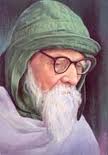 Vinoba Bhave (1895 - 1982) was a freedom fighter and a spiritual teacher. He is best known for Bhoodan Andolan (land gift movement). He is considered as a National Teacher of India and the spiritual successor of Mahatma Gandhi. He was associated with Mahatma Gandhi in the Indian independence movement. In 1932 he was sent to jail by the British, where he wrote his famous book,"Talks on the Gita". In 1940 he was chosen by Gandhi to be the first Individual Satyagrahi against the British rule. In 1958 Vinoba was the first recipient of the international Ramon Magsaysay Award for Community Leadership. He was awarded the Bharat Ratna posthumously in 1983.
Vinoba Bhave (1895 - 1982) was a freedom fighter and a spiritual teacher. He is best known for Bhoodan Andolan (land gift movement). He is considered as a National Teacher of India and the spiritual successor of Mahatma Gandhi. He was associated with Mahatma Gandhi in the Indian independence movement. In 1932 he was sent to jail by the British, where he wrote his famous book,"Talks on the Gita". In 1940 he was chosen by Gandhi to be the first Individual Satyagrahi against the British rule. In 1958 Vinoba was the first recipient of the international Ramon Magsaysay Award for Community Leadership. He was awarded the Bharat Ratna posthumously in 1983.
Related Posts with thumbnails for bloggerblogger widgets
Continue reading..
Rabindranath Tagore
By
Admin
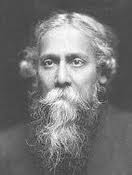 Rabindranath Tagore (1861 – 1941) was a renowned Indian poet, philosopher and artist from Bengal. He became the first non-European Nobel laureate by earning the 1913 Prize in Literature for Gitanjali. Till 1913 he was little known outside of the Calcutta area, and not known at all outside of India. During that period his short stories were published monthly in a friend's magazine and he even played the lead role in a few of the public performances of his plays. In 1912, on the way over to England by Sea,he began translating, for the first time, his latest selections of poems, Gitanjali, into English. Tagore's one friend in England, a famous artist he had met in India, Rothenstein, learned of the translation, and asked to see it. After reading the notebook, the painter could not believe his eyes. The poems were incredible. He called his friend, W.B. Yeats, and finally talked Yeats into looking at the hand scrawled notebook. Yeats was enthralled and rest was history. Less than a year later, in 1913, Rabindranath received the Nobel Prize for literature.
Rabindranath Tagore (1861 – 1941) was a renowned Indian poet, philosopher and artist from Bengal. He became the first non-European Nobel laureate by earning the 1913 Prize in Literature for Gitanjali. Till 1913 he was little known outside of the Calcutta area, and not known at all outside of India. During that period his short stories were published monthly in a friend's magazine and he even played the lead role in a few of the public performances of his plays. In 1912, on the way over to England by Sea,he began translating, for the first time, his latest selections of poems, Gitanjali, into English. Tagore's one friend in England, a famous artist he had met in India, Rothenstein, learned of the translation, and asked to see it. After reading the notebook, the painter could not believe his eyes. The poems were incredible. He called his friend, W.B. Yeats, and finally talked Yeats into looking at the hand scrawled notebook. Yeats was enthralled and rest was history. Less than a year later, in 1913, Rabindranath received the Nobel Prize for literature.
Related Posts with thumbnails for bloggerblogger widgets
Continue reading..
1992 Earth Summit | Agenda 21 | Rio De Janeiro
9 Oct 2011
By
Admin
The 1992 United Nations Conference on Environment and Development came to know as Earth Summit due to its worldwide participation. It was a major United Nations conference in the history in UN, held in Rio de Janeiro in June 1992. 172 governments participated, with 108 sending their heads of state or government.Some 2,400 representatives of non-governmental organizations (NGOs) also attended the conference. Green Cross International is an environmental organisation founded by former Soviet leader Mikhail Gorbachev in 1993, building upon the work started by Earth summit of 1992. Earth Summit 2002 "Rio+10" was held in Johannesburg. In 2012, Rio will again host the next summit,Rio+20 as a 20-year follow-up to the historic 1992 United Nations Conference on Environment and Development (UNCED).
Related Posts with thumbnails for bloggerblogger widgets
Continue reading..
Dayanand Saraswati | Founder of Arya Samaj
7 Oct 2011
By
Admin
Maharishi Dayanand Saraswati (1824 – 1883) was a prominent Hindu religious scholar, reformer, and founder of Hindu reform movement, Arya Samaj. He was the first to give the call for Swarajya – "India for Indians" – in 1876, later taken up by Lokmanya Tilak. He worked towards reviving Vedic ideologies and denounced the idolatry and ritualistic worship prevalent in Hinduism at that time.
Related Posts with thumbnails for bloggerblogger widgets
Continue reading..
Arya Samaj - A Hindu Reform Movement
By
Admin
Arya Samaj is a Hindu reform movement founded by Swami Dayananda in1875. It has around 3–4 million followers worldwide. In 1875 Swami Dayananda published a voluminous work of manuscript under the title Satyarth Prakash or The Light of Meaning of Truth which deals with wide range of subjects like God, the Vedas, Dharma, the soul, science, philosophy, childrearing, education, government and the possible future of both India and the world. This work proved to play a central role in the establishment and growth of the organization which would come to be known as the Arya Samaj. Arya Samaj, unequivocally condemns idol worship, animal sacrifice, ancestor worship, pilgrimages, offerings made in temples, the caste system, untouchability, child marriages and discrimination against women on the grounds that all these lacked Vedic sanction.
Related Posts with thumbnails for bloggerblogger widgets
Continue reading..
Raja Ram Mohan Roy | Social Reformer
6 Oct 2011
By
Admin
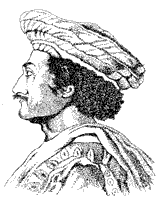 A Bengali by birth, Raja Ram Mohan Roy (1772 - 1833) triggered the religious, social, cultural and educational reforms in India. He was a pioneer in show casing the lines of progress of Indian society under British rule. He challenged the traditional Hindu culture and initiated the Bangal renaissance. The social and cultural awakening of India started with Ram Mohan Roy and through his Brahma Samaj. Because of all this he is considered as the first modern man of India.
Below given are the major events in his life
A Bengali by birth, Raja Ram Mohan Roy (1772 - 1833) triggered the religious, social, cultural and educational reforms in India. He was a pioneer in show casing the lines of progress of Indian society under British rule. He challenged the traditional Hindu culture and initiated the Bangal renaissance. The social and cultural awakening of India started with Ram Mohan Roy and through his Brahma Samaj. Because of all this he is considered as the first modern man of India.
Below given are the major events in his life
Raja Ram Mohan Roy - Social Reformer
1. Ram Mohan Roy learned English from the English missionary William Carey who settled in India to translate, publish and distribute the Bible in Indian languages and propagate Christianity to the Indian peoples.
Related Posts with thumbnails for bloggerblogger widgets
Continue reading..
Santhal rebellion (1855 - 1856) in India
5 Oct 2011
By
Admin
The Santhal rebellion (1855-1856) was a native rebellion in present day Jharkhand, in eastern India against both the British colonial authority and corrupt upper caste zamindari system by the Santal people. The Santal tribes were turned into slaves by the zamindars and the money lenders who first appeared to them as businessmen and traders and had allured them first by goods lent to them on loans. However hard a Santal tried to repay these loans, they never ended. the Santali women who worked under labour contractors were sexually disgraced and used as concubines and comfort women by the money lenders, zamindars and agents of the Raj. This loss of freedom and respect that the Santals enjoyed turned them into rebels and finally they took oath to launch an attack on the most visible symbol of authority, i.e., the British Raj.
Related Posts with thumbnails for bloggerblogger widgets
Continue reading..
Indian Current Affairs - October 2011 | Current Affairs India Notes
By
Admin
The National Highways Development Programme (NHDP) envisages six-laning of 6,500 kms, four laning of 24,700 kms and upgradaing of 20,000 kms of National Highways, besides development of 1,000 km of expressways. Under this programme, a length of about 15,000 km has already been completed and about 10,000 km is under construction. Over the next three years, it is proposed to take up new sections of about 25,000 km, through a combination of PPP (Public Private Partnership) and EPC (Engineering Procurement and Construction). The National Highways, with a total length of 70934 km, serve as the arterial network of the country. The Government has set an ambitious target of upgrading 20 km of National Highways per day.
Related Posts with thumbnails for bloggerblogger widgets
Continue reading..
Indian Current Affairs | Current Affairs India - October 2011
4 Oct 2011
By
Admin
India has now become the 4th largest producer of crude steel in the world in 2010 as against the 8th position in 2003. India is expected to become the 2nd largest producer of crude steel in the world by 2015. India also maintained its lead position as the world’s largest producer of direct reduced iron (DRI) or sponge iron. The steel sector contributes to nearly 2% of the GDP and employs over 5 lakh people. The per capita steel consumption during the last six years has risen from 38 kg in 2005-06 to 55 kg in 2010-11. Steel Authority of India Limited (SAIL) is the leading steel-making company in India. It is a fully integrated iron and steel maker, producing both basic and special steels for domestic construction, engineering, power, railway, automotive defense industries etc. SAIL is also among the five Maharatnas of the country’s Central Public Sector Enterprises.
Related Posts with thumbnails for bloggerblogger widgets
Continue reading..
Vernacular Press Act of 1878
By
Admin
Right after the revolt of 1857, Lord Canning passed a “Gagging Act”, making it mandatory for newspaper publishers to obtain licences and submit material for vetting prior to publication. The Act also held that no licensed press should publish printed material impugning the motives of the British Raj, tending to bring it hatred and contempt and exciting unlawful resistance to its orders. When the British Government found that the Gagging Act was not potent enough to repress all Nationalist sentiments, it went on to create a more forcible law, which came as the Vernacular Press Act of 1878. It was passed under the Governor Generalship of Lord Lytton, for ‘better control” of Indian language newspapers. The purpose of the Act was to control the printing and circulation of seditious material, calculated to produce disaffection against the British Government in India in the minds of the ignorant, uneducated and largely illiterate masses. The viceroy Lord Lytton strongly denounced newspapers published in the vernacular languages as "mischievous scribblers preaching open sedition". He remarked that the whole purpose of most of the vernacular newspapers was an end to the British raj. The Act was intended to prevent the vernacular press from expressing criticism of British policies—notably, the opposition that had grown with the outset of the Second Anglo-Afghan War (1878–80). The act excluded English-language publications.
Related Posts with thumbnails for bloggerblogger widgets
Continue reading..
Indigo Revolt of 1859
By
Admin
The Indigo revolt was a peasant movement and subsequent uprising of indigo farmers against the indigo planters that arose in Bengal in 1859. The British provided loans called dadon at very high interest rate. Once farmer took such a loan he remained indebted forever and passed it on to his successors. The price paid by the planters for this cash crop was ridiculously low, just 2.5% of the market price. The farmers were forced to sell at this price lest the planters would destroy their mortgage property. Government rules also favored the planters.
Related Posts with thumbnails for bloggerblogger widgets
Continue reading..
Leaders of Revolt of 1857 in India
2 Oct 2011
By
Admin
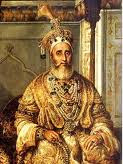 Bahadur Shah Zafar
Bahadur Shah Zafar
As the Indian rebellion of 1857 spread most rebelling Indian kings and the Indian regiments accepted Bahadur Shah Zafar as the Emperor of India under whom the smaller Indian kingdoms would unite until the British were defeated. Zafar was the least threatening and least ambitious of monarchs, and the legacy of the Mughal Empire was more acceptable a uniting force to most allied kings than the domination of any other Indian kingdom. When the victory of the British became certain, Zafar took refuge at Humayun's Tomb and hid there. British forces surrounded the tomb and compelled his surrender. The next day British shot his sons and grandson at the Khooni Darwaza (the bloody gate) near Delhi Gate. After a show trial, Zafar himself was exiled to Rangoon, Burma in 1858 along with his wife Zeenat Mahal and some of the remaining members of the family. His departure as Emperor marked the end of more than three centuries of Mughal rule in India.
Related Posts with thumbnails for bloggerblogger widgets
Continue reading..
Revolt of 1857 | Revolt of 1857 in India - Causes
By
Admin
The 1857 revolt is considered as the first serious attempt by Indians to end the British rule in India.It started as a movement in the upper Gangetic plain and central India, but continued long 90 years till India got her freedom. The Indian historian, Vir Savarkar was the first one to mention the revolt of 1857 as the first war of Indian Independence. Lets discuss about the causes, nature and people who involved in this revolt,which is considered as the first freedom struggle movement of India.
Places in focus
The revolt of 1857 began as a mutiny of sepoys of the East India Company's army on 10 May 1857, in the town of Meerut, and soon erupted into other mutinies and civilian rebellions largely in the upper Gangetic plain and central India, with the major hostilities confined to present-day Uttar Pradesh, Bihar, northern Madhya Pradesh, and the Delhi region.Other regions of Company-controlled India—Bengal province, the Bombay Presidency, and the Madras Presidency—remained largely calm. In Punjab, the Sikh princes backed the Company by providing both soldiers and support. The large princely states, Hyderabad, Mysore, Travancore, and Kashmir, as well as the smaller ones of Rajputana did not join the rebellion.
Related Posts with thumbnails for bloggerblogger widgets
Continue reading..


